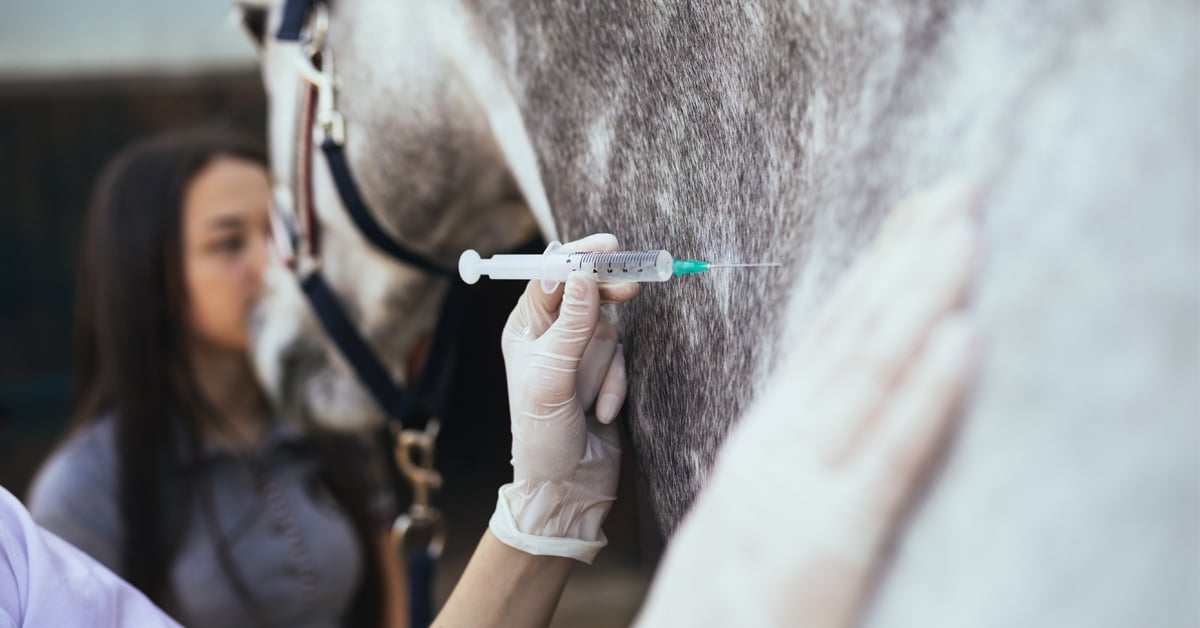Since the advent of penicillin in 1928, the use of antibiotics has saved millions of lives, both human and animal. However, the overuse of antibiotics has created an adverse phenomenon that’s just as problematic as the bacterial infections they were developed to treat: antibiotic resistance.
Bacterial infections are caused by pathogenic bacteria. Antibiotics work by impeding the bacteria’s vital processes in a variety of ways, such as killing them, stopping them from reproducing, or damaging the way the bacteria work.
Antibiotic resistance occurs when bacteria evolve in response to our use of antibiotics. The result is bacterial infections that are harder to treat ‒ they last longer, take more time to heal, and require more medication to resolve.
Why is this happening, which pathogens are becoming most dangerous, and what does a future of antibiotic-resistant bacteria look like for horse owners?
Pathogens of Concern
According to Dr. J Scott Weese, pathobiologist, professor at the Ontario Veterinary College at the University of Guelph, and Director of the Centre for Public Health and Zoonoses, various bacteria can be of concern, and the role they play varies by region, horse type, and disease.
Some of the most common bacteria of concern for Canadian horse owners are methicillin-resistant Staph aureus (MRSA), which can manifest as infections around wounds and surgical incisions, cellulitis, and pneumonia.
Other concerning bacteria are extended-spectrum beta-lactamase (ESBL) producing Enterobacterales (a large order of bacteria that includes E Coli, which can cause uterine infections, infected wounds, and septicemia in foals), and multidrug-resistant (MDR) Salmonella, which can cause salmonellosis, a GI tract disorder which can be fatal.
Multi-drug-resistant Rhodococcus, a soilborne bacteria that can cause pneumonia in foals under six months, is common in the United States and a potential concern for Canadian horses, but not yet well characterized north of the border.
While this list may be concerning enough, it’s important to note that many other different strains of bacteria are growing increasingly resistant and can cause problems in other circumstances.
It’s not the individual horse that develops a resistance to antibiotics, but the bacteria itself that becomes resistant to antimicrobial medications.
What Causes Antibiotic Resistance?
Simply put, antibiotic resistance is caused by antibiotic use. The more bacteria are exposed to antibiotics, the more likely they are to become resistant.
Bacteria develop resistance through genetic mutation, where replicating bacteria cells develop a mutation that makes them resistant to antibiotics, or through horizontal gene transfer, where an already resistant bacteria cell transfers its resistant DNA to another cell, making it resistant, too.
It is important to note that it’s not the individual horse that develops a resistance to antibiotics, but the bacteria itself that becomes resistant to antimicrobial medications.
The rise of antibiotic-resistant “superbugs” has tremendously negative impacts for horses as well as other animal species including humans. As bacteria become increasingly resistant, veterinarians are running out of effective antibiotic medications to combat infections. This means longer recovery times for infected horses and rising veterinary costs for horse owners, as infections require more care, medication, and time to treat.
In the worst-case scenario, severe infections may not respond to antibiotic treatment at all, leaving sick or injured horses without much hope for recovery.
What’s the Solution?
Ultimately, resistance is driven by use. This means the best way to combat antibiotic resistance is to not need antibiotics in the first place.
According to Dr. Weese, “Reducing unnecessary use is an important approach. However, any use (including appropriate use) can lead to some pressure for resistance, so a key point is reducing the need for any antibiotic use.
Good management, including preventive medicine, wound care, nutrition, and various other things that keep horses healthy and reduce situations that might lead to a need for antibiotics are key. Healthy horses don’t need antibiotics, and we can do things to make and keep horses healthier.”
Other sound management practices include:
Because many resistant bacteria can be transferred between humans and animals, it’s important to practice good basic hygiene ‒ wash your hands before and after interacting with horses, especially a sick or injured horse. (Read tips on Equine Biosecurity Principles and Best Practices here.)
If your horse has been prescribed antibiotics, ensure you administer the full dose every time. Underdosing can increase resistance.
Do not save unused antibiotics, administer antibiotics to other horses, or try to use antibiotics preventatively. “We want all antibiotic use to be under the direction of a vet since that helps make sure it’s necessary and done right. A lot of antibiotics get used unnecessarily or wrongly when decisions are made without vet input,” adds Dr.Weese.
Viral infections do not respond to antibiotics; a horse displaying a nasal discharge or cough may be affected by a viral infection which will likely improve within a week on its own. Ask your vet about non-antibiotic options to make your horse more comfortable, or whether antibiotics are necessary.
Small cuts or wounds do not always require antibiotics treatment. Clean and dress the wound and discuss how to proceed with your veterinarian.
The prospect of antibiotic-resistant ‘superbugs’ isn’t a dystopian future ‒ it’s rapidly becoming a frightening reality. But by keeping our horses healthy and using antibiotics minimally and responsibly, every horse owner can take a meaningful stand in the fight against antibiotic resistance.

